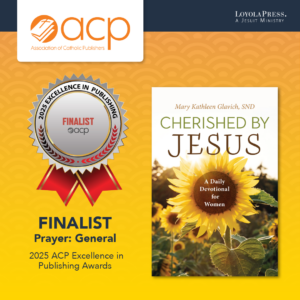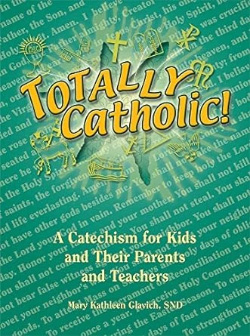 The Easter season is fifty days long, affording us plenty of time to ponder this fantastic mystery of our faith: Jesus made it possible for us to live forever. We celebrate the death/rising phenomenon employing various symbols that point to new, abundant life: eggs, rabbits, lilies, the sun, spring. I’ve thought of a new Easter symbol for our modern world. The other day my computer “died.” For no apparent reason, the screen became dark. No amount of clicking and pushing buttons brought back the manuscripts I was working on, the artwork I saved, and access to my email account and Facebook. After several long minutes of panic, I pulled out all the plugs and replugged them, and then turned off the power on the surge protector and turned it on again. Miraculously the computer came back to life. You can imagine my relief and joy. This experience, like other metaphors, limps. Yes, what was dead was revived. But on Easter, Jesus came back different—with a new and glorious life. He could walk through walls, appear and disappear, and he would never die again. Alas, after dying, my computer is not improved at all. It still has a virus, and it still won’t let me view certain videos. Moreover, I know that someday it will konk out again.
The Easter season is fifty days long, affording us plenty of time to ponder this fantastic mystery of our faith: Jesus made it possible for us to live forever. We celebrate the death/rising phenomenon employing various symbols that point to new, abundant life: eggs, rabbits, lilies, the sun, spring. I’ve thought of a new Easter symbol for our modern world. The other day my computer “died.” For no apparent reason, the screen became dark. No amount of clicking and pushing buttons brought back the manuscripts I was working on, the artwork I saved, and access to my email account and Facebook. After several long minutes of panic, I pulled out all the plugs and replugged them, and then turned off the power on the surge protector and turned it on again. Miraculously the computer came back to life. You can imagine my relief and joy. This experience, like other metaphors, limps. Yes, what was dead was revived. But on Easter, Jesus came back different—with a new and glorious life. He could walk through walls, appear and disappear, and he would never die again. Alas, after dying, my computer is not improved at all. It still has a virus, and it still won’t let me view certain videos. Moreover, I know that someday it will konk out again.
Life offers other experiences that are mini-Easters. A relative or friend is in a coma with no hope for survival, and suddenly he or she moves a hand. A precious plant shrivels up and “dies,” and just when you are going to throw it out, you notice it has two tiny green leaves. A person that you lost track of gets in touch, and your friendship is revived.
In case you are not familiar with, or forgot, the reasons for the traditional Easter symbols, read on . . .
Spring flowers: During winter the world is barren and looks dead, but when spring comes, in our landscapes—and maybe in our yards—vibrant, new flowers burst forth.
Rabbits: These are prolific animals, a fitting symbol of the abundant life Jesus promised.
Eggs: Just as a chick emerges from what looks like an inanimate object, Jesus comes forth from the tomb “newborn.”
Lily: This flower is shaped like a trumpet as though it announces Jesus’ resurrection. Its white color stands for purity, while its gold stamens symbolize royalty and glory.
Sunrise: After the dead of night, the brilliant, life-giving sun rises in the East, a symbol of the Son who rose.
Lamb: Cakes in the shape of a lamb and covered with cocoanut are served at Easter meals. They stand for the “Lamb of God,” Jesus who was sacrificed for us once and for all. His sacrifice was foreshadowed by the Passover lambs whose blood on Hebrew doorposts in Egypt saved these slaves from death.
Butterfly: A lowly caterpillar emerges from its cocoon as a new creature, a lovely butterfly with wings that enable it to fly. Obviously the butterfly symbolizes the new life Jesus has as he leaves behind an empty tomb.
New clothes: At baptism we put on Christ and were made new.
Alleluia: This word means “Praise the Lord.” (from the Hebrew “Hallel,” for praise and “Yah” for Yahweh.) It conveys thanks and joy. This is one reason why Handel’s Messiah with its “Hallelujah Chorus” is popular around Easter.
What other modern or natural symbols for Easter can you think of?
B OOK REVIEW: Our Lady of Fatima: 100 Years of Stories, Prayers, and Devotions
OOK REVIEW: Our Lady of Fatima: 100 Years of Stories, Prayers, and Devotions
Donna-Marie Cooper O’Boyle Servant Books, $15.99
This May, Pope Francis is expected to canonize Francesco and Jacinta Marto, two of the three children who witnessed Mary’s appearances at Fatima. This year marks the 100th anniversary of the first apparition on May 13, 1917. The book Our Lady of Fatima could not be more timely.
The author presents a carefully detailed exposition of the apparitions, beginning with the Angel of Peace’s visits in 1916 that prepared the three visionaries for Mary and concluding with Mary’s final visit, when the miracle of the dancing sun occurred, witnessed by thousands of people. This is followed by accounts of the lives of the three cousins, Francesco, Jacinta, and Lucia after the Fatima apparitions. The siblings Francesco and Jacinta died as children, but Lucia lived to become a Carmelite nun and died in the year 2000.
People who are familiar with the Fatima story, perhaps from viewing the movie about it, will learn new facts. For example, I didn’t know that Mary continued to speak to the children individually after the famous apparitions. Also, I was surprised to learn the extent of the sacrifices the three children undertook as a result of their special mission and the suffering it entailed. They truly did lead the heroic lives of virtue required for canonization.
Found in the book are explanations of the “three” secrets of Fatima and Mary’s requests, in particular, consecrating the world to her Immaculate Heart and the devotion of the Five First Saturdays. Included are various Popes’ reactions to Our Lady’s requests. Of course, the story of St. Pope John Paul II’s survival after being shot with four bullets on May 13 is recounted. The Pope attributed this miracle to Our Lady of Fatima and had one extracted bullet inserted in Mary’s crown on her statue in Portugal.
Woven through the book are numerous quotations from Popes and personnel of EWTN, where the author is a host. Each chapter ends with thoughts for reflection, suggestions for application, and a prayer. In an Appendix is a collection of prayers and devotions related to Fatima.
The book is marred by needless repetition and a few errors: beautified for beatified, lightening for lightning, and some incorrect punctuation. These can be overlooked in light of the book’s content; for the outstanding messages of Fatima are pray for world peace, especially the rosary, and perform sacrifices for sinners. This advice is sorely needed today. Reading this book promises to kindle a renewed zeal for living a holier life.









